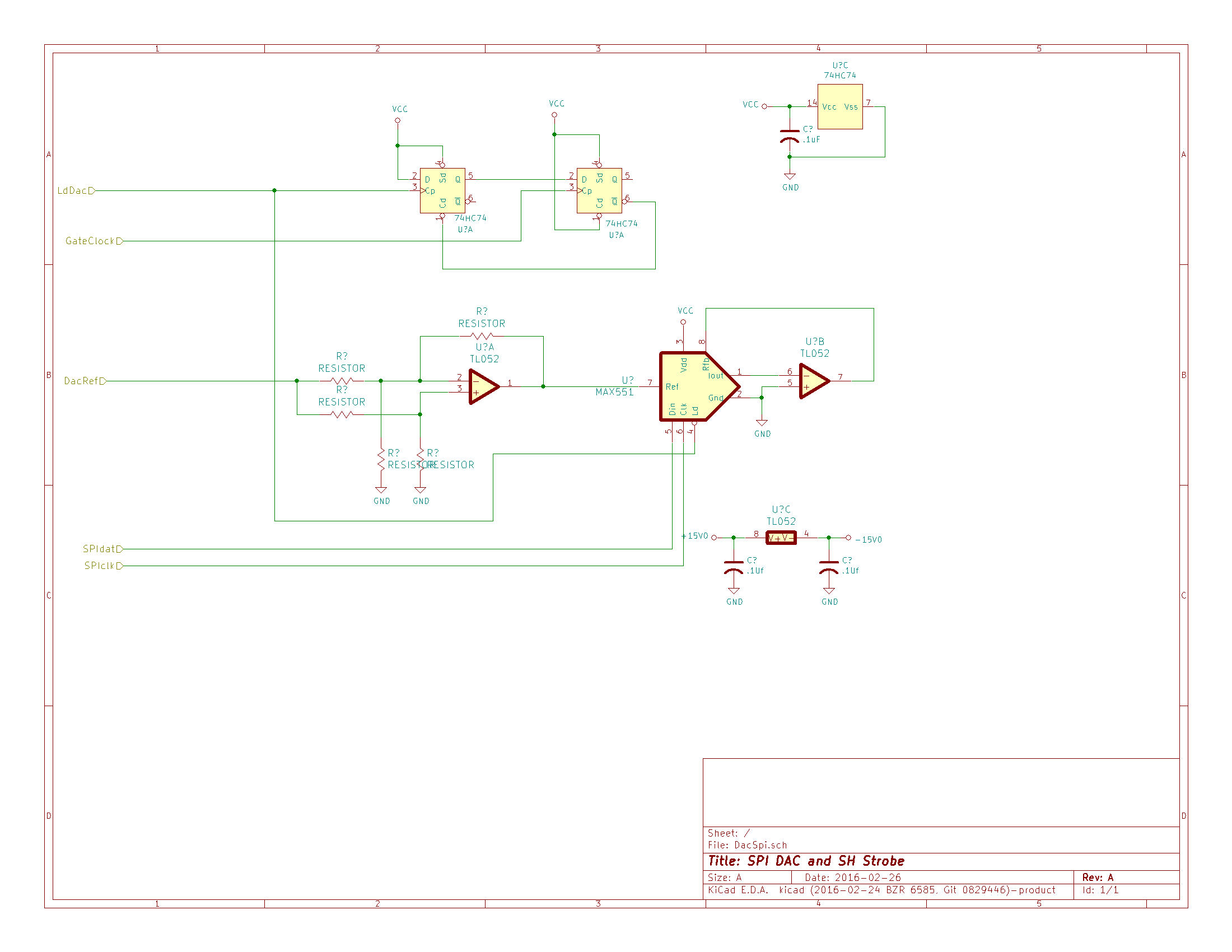KiCad Synth DIY SYNTHBLOCKS
First Posted Feburary 24, 2016
Updated March 27, 2016
When I was using Orcad V9.2 to do my schematics, I created a library of
parts and circuit blocks that I used all the time. The one
problem with Orcad is that nobody else, for all intents and purposes,
was using it. And, I can't blame them. OrCad is really
expensive. However, with the release of KiCad Version 4, KiCad
works well enough for me to be able to use it without quiting in
frustration. So I am gradually moving every thing ofer to KiCad
so that it can now be 100% open source.
Disclaimer:
Everything you find on this page is Open Source. And while most
of these are tried and true circuits, they have been all redrawn in
KiCad. So for the time being, you really should consider them all
untested until the circuits can be verified by actually making a PCB
from them.
Also, please note, the the components in the library were done
initially from memory. My memory is not as impecable as it
was. However, as I use this library, problems are being
fixed. From March 27 on, I am hoping that the problems are few
and far between. I have also renamed the library file.
Schematic and PCB Footprints Library Updated March 27, 2016
Circuit Blocks Updated at March 27, 2016
March 7, 2016
In this update, there are some new componts in the
libraries and some corrections. I think I finally have the TO92
footprint and the schematic symbols that use it now correct amd
cpmsostamt/ This includes the DUAL_2N3904, DUAL_2N3906, LM78L05,
PNP and NPN.
I have also added two new circuit modules. Both do the same function. They are MidiMerger5U and MidiMerger4U/EURO.
The later is still undergoing revision, but the former I am pretty sure
is ready to generate gerbers and send out, or real close at least.
Here is a "Catalog" of schemtics that are in the Circuit Blocks.
MIDI MERGER (5U version)
Based on the ATMega1284, in a 40 pin DIP package,
this ciruict features four expansion ports that break out the unused
pins on the chip so that future hacking can easily be done. This
includes 8 analog inputs so that in theory you could add 8 control
knobs that will also mix control messages into the midi stream.
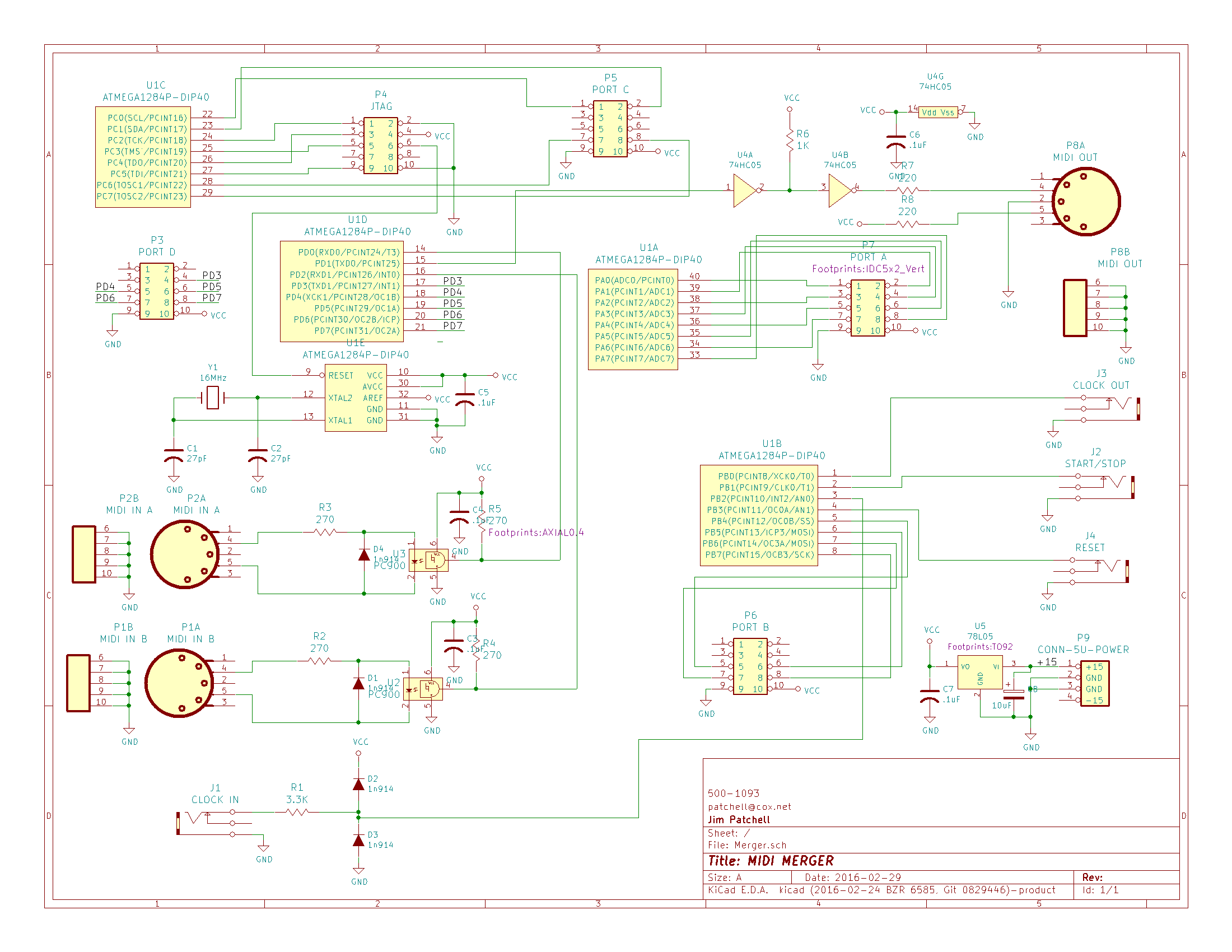
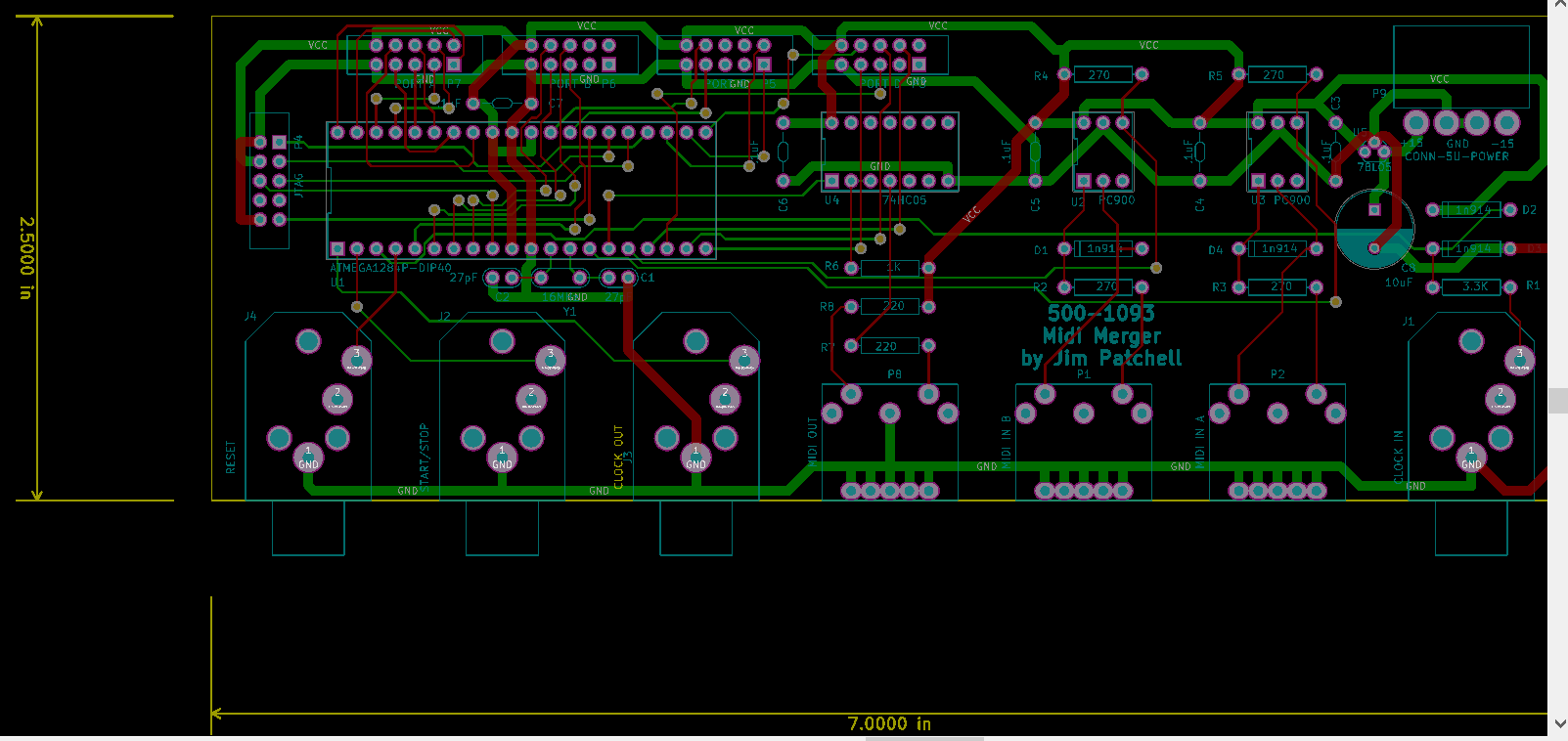
VCO
This VCO was designed by Scott Bernardi and myself
and it was officially working on Feb 1, 2003. You can find info
on this elsewhere on this website. The VCO core oscillator was
designed by Terry Michaels and info about it can be found in some of
the earlier issues of Electronotes. Primarily what Scott and I
added to the oscillator was the active temperature compensation.
I came up with the variable gain amplifier, Scott came up with the band
gap thermometer. I still have the original boards that had the
first version of the oscillator that was built back in 2003 and to this
day it has never needed to be retuned.
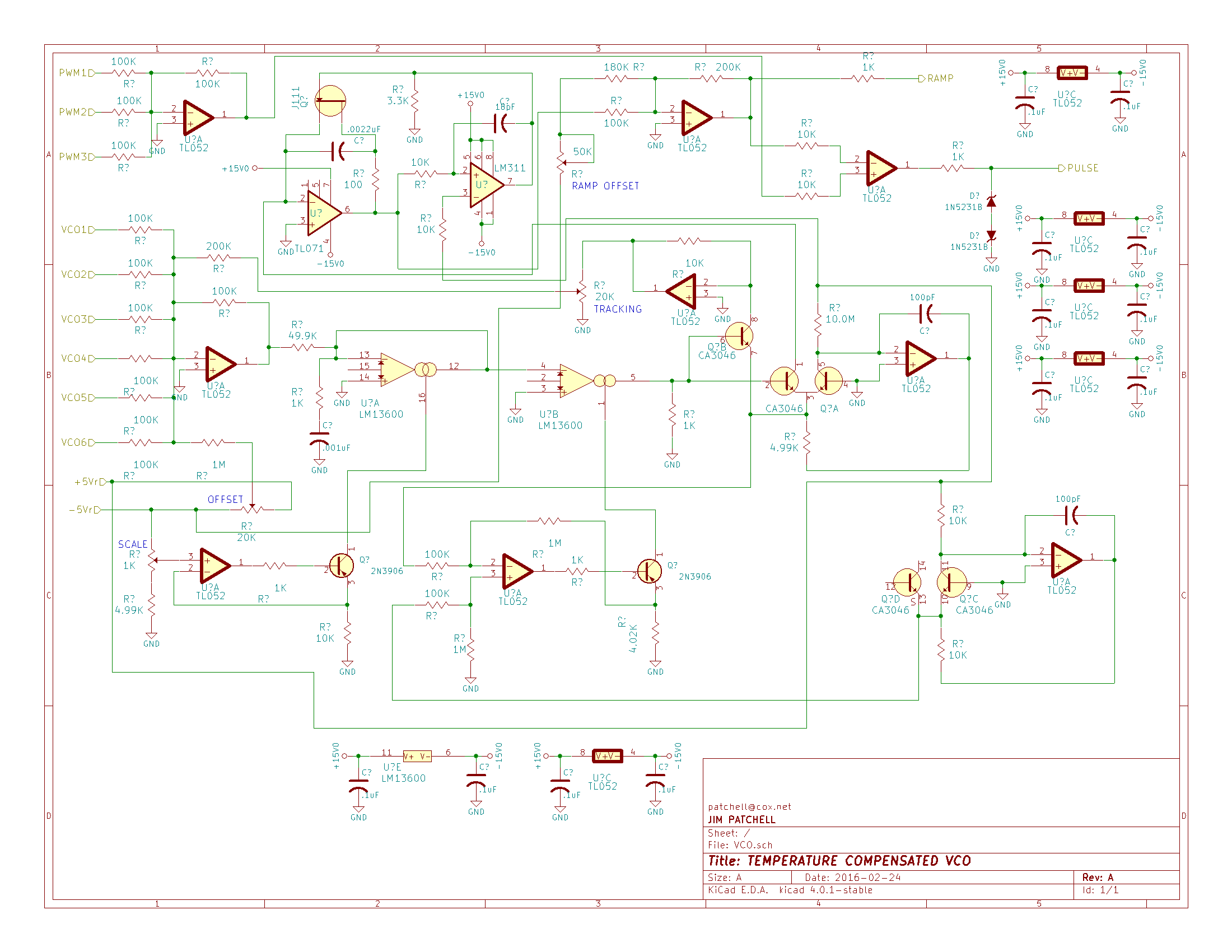
ADSR CORE
This is the analog portion of an ADSR Envelope
Generator. The logic is not present. Generally, I implement
this in a micro controller of some sort. My personal favorite is
the ATmega328. But you can use any other micro controller, or
even just plain old ordina HC logic. The ADSR requires three
states. The idle state is the RELEASE_STATE. It will remain
in this state until the logic recieves a GATE signal. Then we go
into the ATTACK_STATE. In this state, the output of the ADSR will
be heading towards about 13 volts. But before it gets there, the
comparator is tripped and lets the logic know that it needs to now be
in the SUSTAIN_STATE. The ADSR will remain in the SUSTAIN_STATE
until the GATE signal returns to inactive.
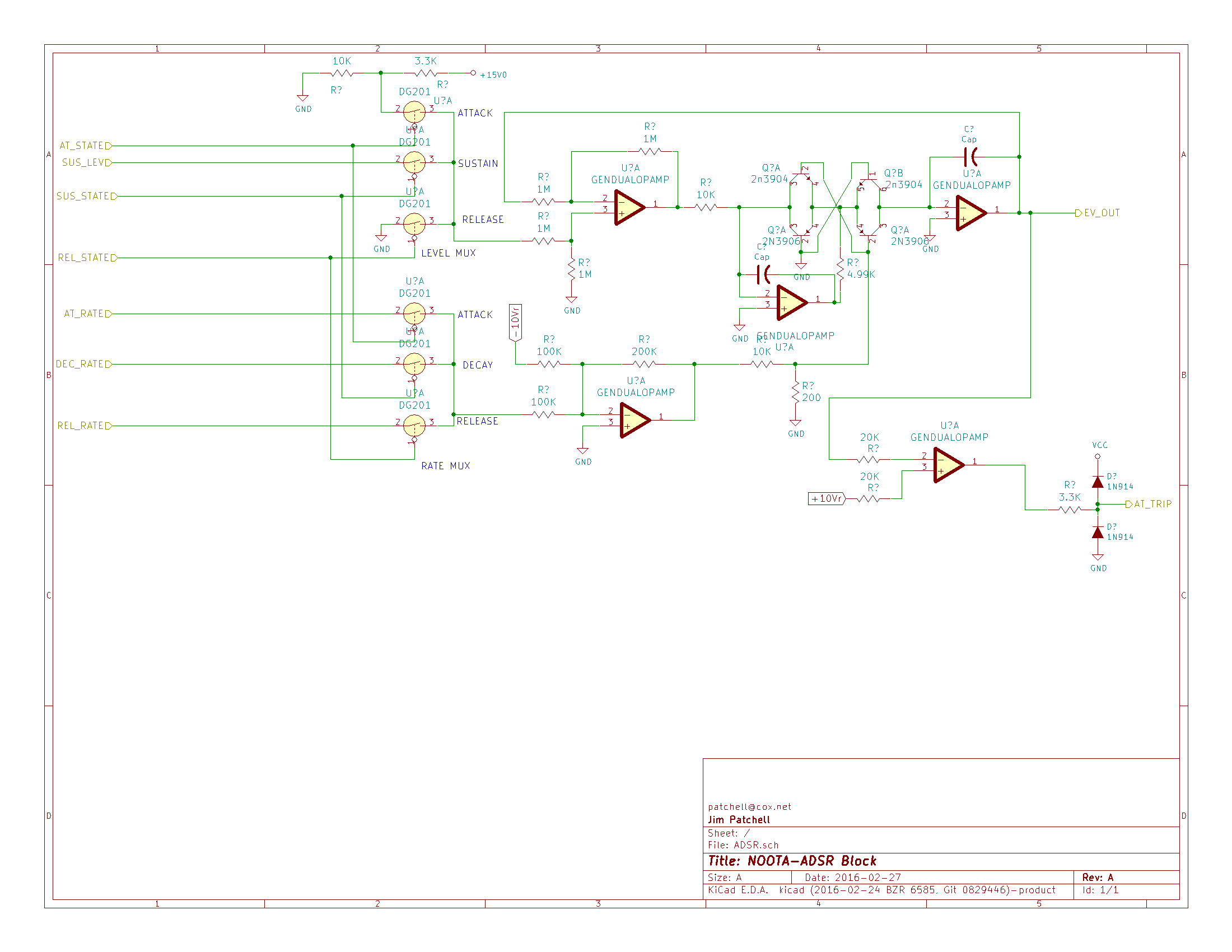
MULTISEGMENT ENVELOPE GENERATOR CORE
This is very much like the ADSR, but has a total of four states, and it
allows you to set the levels of Attack and Seg1 and Seg2.
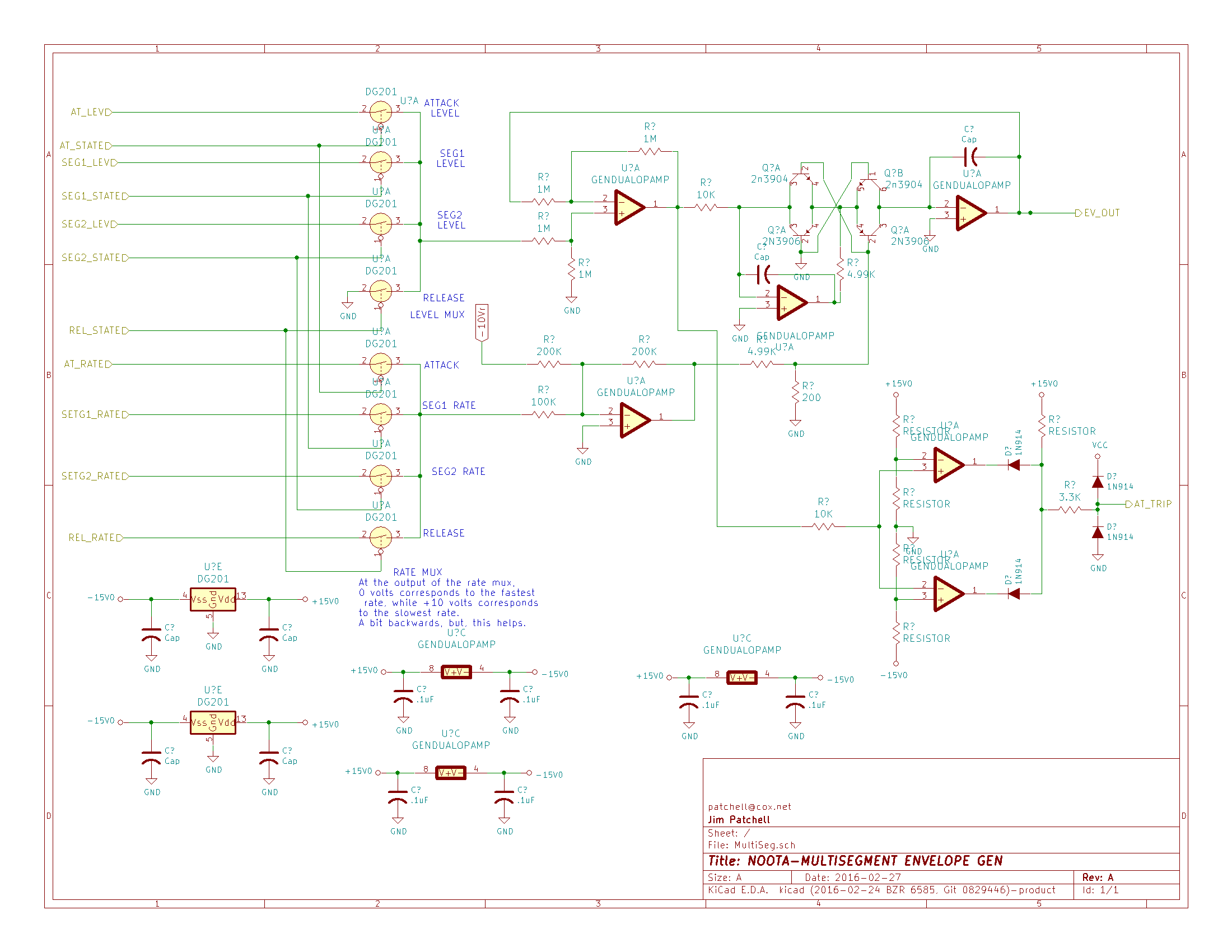
Midi Controller

SPI DAC
